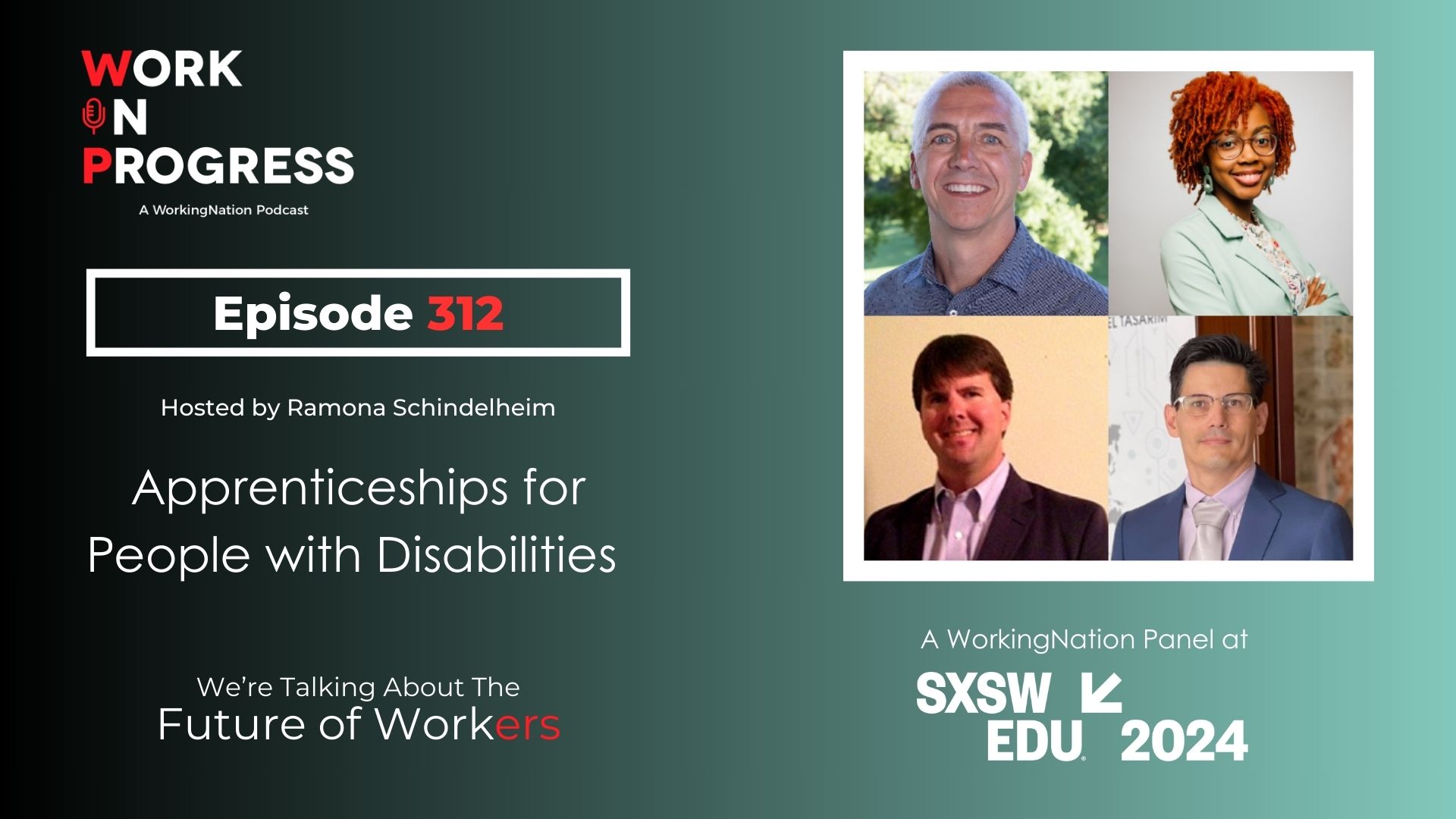Rapid changes in technology, combined with other powerful factors, are disrupting the workforce. Jobs are changing; some are going away while new ones are created. As technology continues to evolve, the level of disruption is projected to explode. The new chair of the National Governors Association is calling on his fellow governors to turn this challenge into an opportunity for every American.
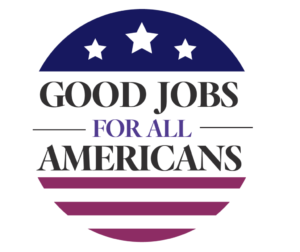
“We’re on the cusp of a profound economic and social transformation, catalyzed by technological advancement, by changing demographics, by evolving skills and by new ways of engaging with work,” according to Governor Steven Bullock of Montana. “We have to equip workers with new skills, preparing them for jobs, some that don’t even exist today.” That’s where the Good Jobs for All Americans initiative comes in.
A different governor heads the NGA each year, and that governor selects an initiative for the governors to address together. “I’ve asked that we focus on ensuring that our country’s workers have the opportunity to get a good job that pays a decent wage with benefits that they deserve,” explained Gov. Bullock.
He said the initiative would focus on bettering the prospects of both workers and employers. “The number one thing that we hear from our businesses is how can we make sure that we have a trained and talented workforce,” Gov. Bullock said.
Bullock’s message is that the trends that are reshaping the economy — if we capitalize on them now — have the potential to fuel massive economic growth, improve the bottom lines for all businesses, and, most importantly, “create new waves of upward mobility for every American.”
The Good Jobs for All Americans initiative is a work-in-progress, and the NGA is holding a series of meetings across the country on just how to achieve that goal. More than 15 states took part in the regional meeting in Pittsburgh in September, sharing best practices and challenges they are facing. Gov. Bullock started the conversation by outlining the three-pronged approach of the initiative: creating the workforce of the future, reskilling displaced mid-career workers and reinvigorating rural communities.
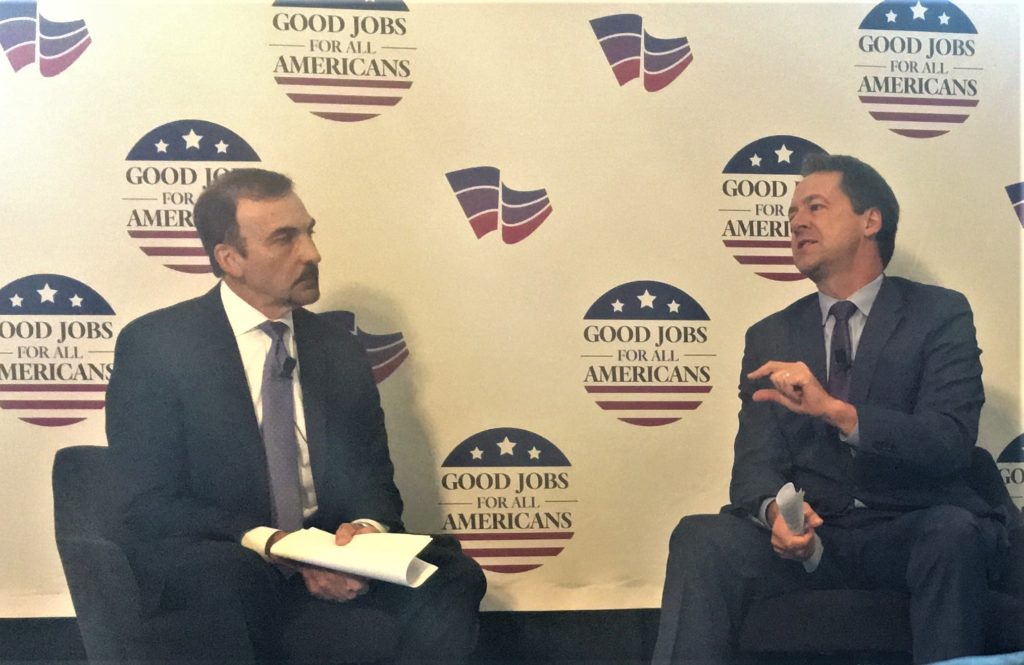
“Our current and future workers must be prepared for a new environment and governors can lead the charge to create stronger connections between that education sector and the private sector,” Gov. Bullock told the group. “Our focus on future labor has to also be supplemented by investing in present workers. We need to be working to scale up successful programs and develop new ones to reskill mid-career workers who are most vulnerable to rapid change in a changing economy.”
Governor Bullock warned that the states must remember the rural communities often excluded from new tech and economic advances.
“We know that rural America can often face limited access to education, insufficient digital or physical infrastructure, lesser access to good health care and declining labor pools,” said Gov. Bullock. “We have to recognize that if any community is left behind, that we all fall behind, so we’ll be asking our governors also to focus our energies on working with small towns and communities all over America to empower them in their own future. If we strengthen that backbone of America, our whole nation certainly stands taller.”
Gov. Bullock praised the governors and state workforce development programs already doing good work around the county. The goal of the initiative is — through sharing information on those programs that are working and discussing ongoing issues that are getting in the way of progress — to develop a comprehensive roadmap focused on solutions for all states to use to create a more advanced and productive workforce.
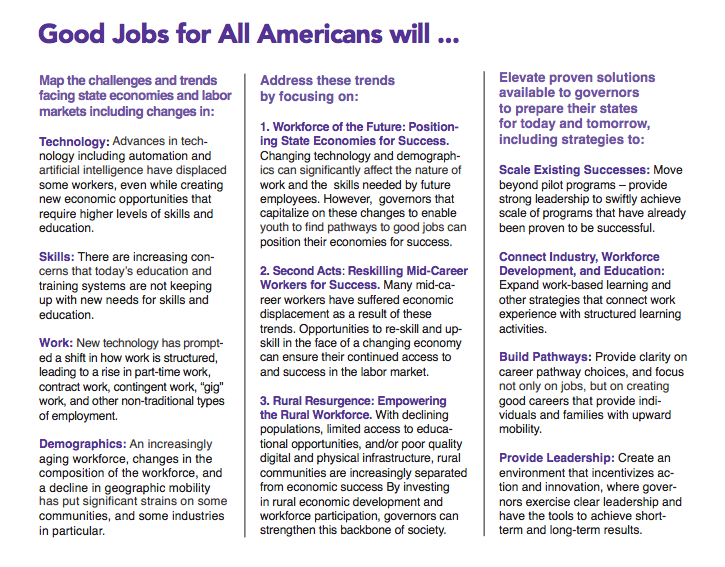
“The economy of the future, and more and more the economy of today, requires schools to partner with businesses and provide better career information to youths so that they’re prepared for whatever the future might hold. It’s going to demand sustained investments and apprenticeships and on-the-job training programs, as well as forming direct connections between business and skilled labor,” according to Gov. Bullock.
Gov. Bullock and I discussed some of the workforce development challenges and the strategies that are working in Montana when we spoke in Pittsburgh and also earlier this year at the Milken Global Conference in California.
“When I first took office five years ago, we put together what was called the Main Street Montana Project. By the end of it, it involved over 250 different companies. The number one issue that they said to us isn’t about regulations and isn’t about our taxes, which is good. Their biggest challenge is to make sure they have a talented and trained workforce.”
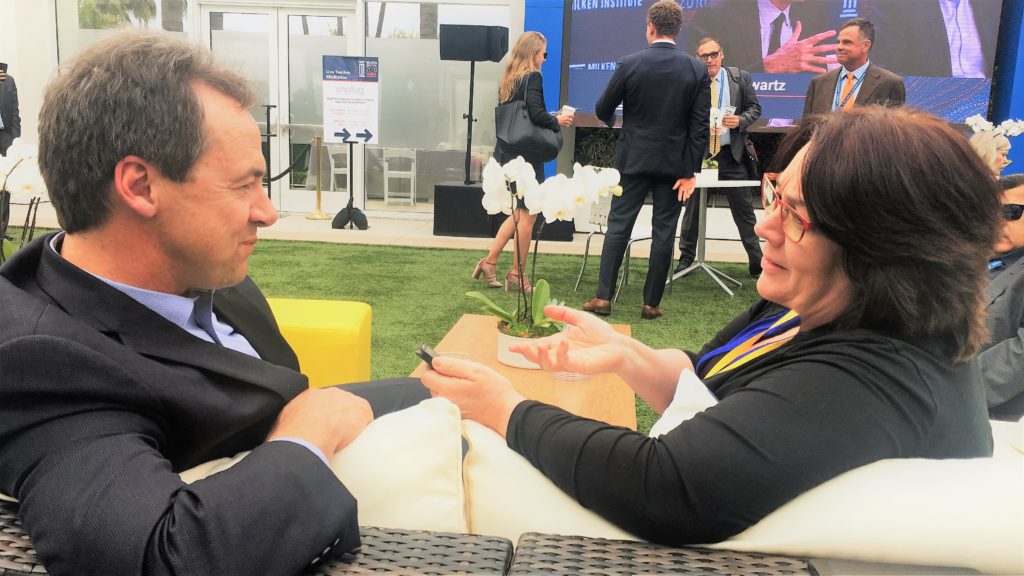
“I think that we have a role as governors to bridge some of the silos between employer and workforce, and also education.” Gov. Bullock said.
Montana actively encourages businesses, schools, and counselors to engage teenagers earlier, getting them to look at the potential careers that are awaiting them after high school graduation. “If we’re doing this right, a lot of these opportunities don’t wait until you’re in college,” the governor said.
Gov. Bullock added that each person is unique and not everybody needs a four-year degree, “You really need to start taking a look at where the opportunities are, and what your skill set is.”
Colleges are offering more two-year degrees in industries vital to the economic growth of Montana. For example, the state has attracted more than 40 photonics companies, clustered mainly around Bozeman. Photonics technology involves the development and use of lasers, optics, fiber-optics and other electro-optical devices in areas such as manufacturing, health care, security, aerospace and alternative energy.
“They need middle-skilled workers, so we started a two-year tech program at our local two-year college to make sure to be feeding them the pipeline of workers along the way so that they have what they need,” said Gov. Bullock.
RELATED STORY: Solving the global talent shortage crisis
Gov. Bullock said he incentivized employers to recognize that there are apprenticeship opportunities in over a thousand different fields. For every apprentice a business hires, they get a $750 tax credit, which is increased to $1,500 if the apprentice is a veteran. Spending the money on registered apprenticeships is turning out to be a good investment for the state, the employer and workers.
“We know that 90 percent of the folks that go through the registered apprenticeship program stay and work in Montana, and on average they make about $20,000 more than the average wage,” said Bullock.
“We used to think of apprenticeship programs as just in the trades such as welders,” said Gov. Bullock. That’s changed. Montana started eight new apprenticeships in health care last year alone, including a new one for nurses, workers who are in high demand.
“We fundamentally dug in with both the employers and hiring managers, and said, ‘Okay how much seat time is required right now for a registered nurse?’ Well, we cut that down by 20 percent because they said that the sooner that we can get these young men and women out in the workforce if they have the skills, that demand is going to be met as a result,” the governor said.
There’s even an apprenticeship in craft brewing and fermentation. “Montana is second in the nation for microbreweries per capita. All these breweries can’t even find a talented workforce, so we started apprenticeship programs where they will get an industry-recognized credential by the end of it, in that area as well.”
“We know workplace learning works. Professionally-recognized certificates work. Making sure that we’re upskilling our mid-career workers works,” Gov. Bullock told me. “What we’ve got to do, even though we visualize state by state, is make sure that we’re bringing those opportunities all across the 50 states.”
There will be two more regional workshops bringing state leaders together. In May, the National Governors Association will release its report on specific actions that governors and states could take to build the workforce of the future and reskill mid-career workers.
“This guide will take many forms. There will be a written lessons-learned report, that will be complete with state examples,” according to Senior Policy Analyst Michael Bartlett of the NGA’s Economic Opportunity Division. “We’re also working on really creating more interactive and multimedia types of evidence. We’re very interested in creating videos, or how-to guides, or just more tangible ways for policymakers across the country to be able to engage with this content and kind of tap into a peer network of expertise.”
Governor Bullock acknowledged that there are some headwinds to tackling such a massive workforce disruption now and in the future, but the need for all stakeholders to act together is an urgent one.
“We’ve seen rising tensions and fears of joblessness or displacement because of these same trends. We also know that the promise of economic opportunity is not a reality for large swaths of Americans. And we can no longer afford to leave anyone behind. It’s imperative that as governors, we bridge those growing divides and ensure that all Americans have an equal shot at a better life.”
The State of Work series for WorkingNation from Executive Producer and Senior Business Correspondent Ramona Schindelheim gives a first-hand look at the workforce development programs happening at the state level.


